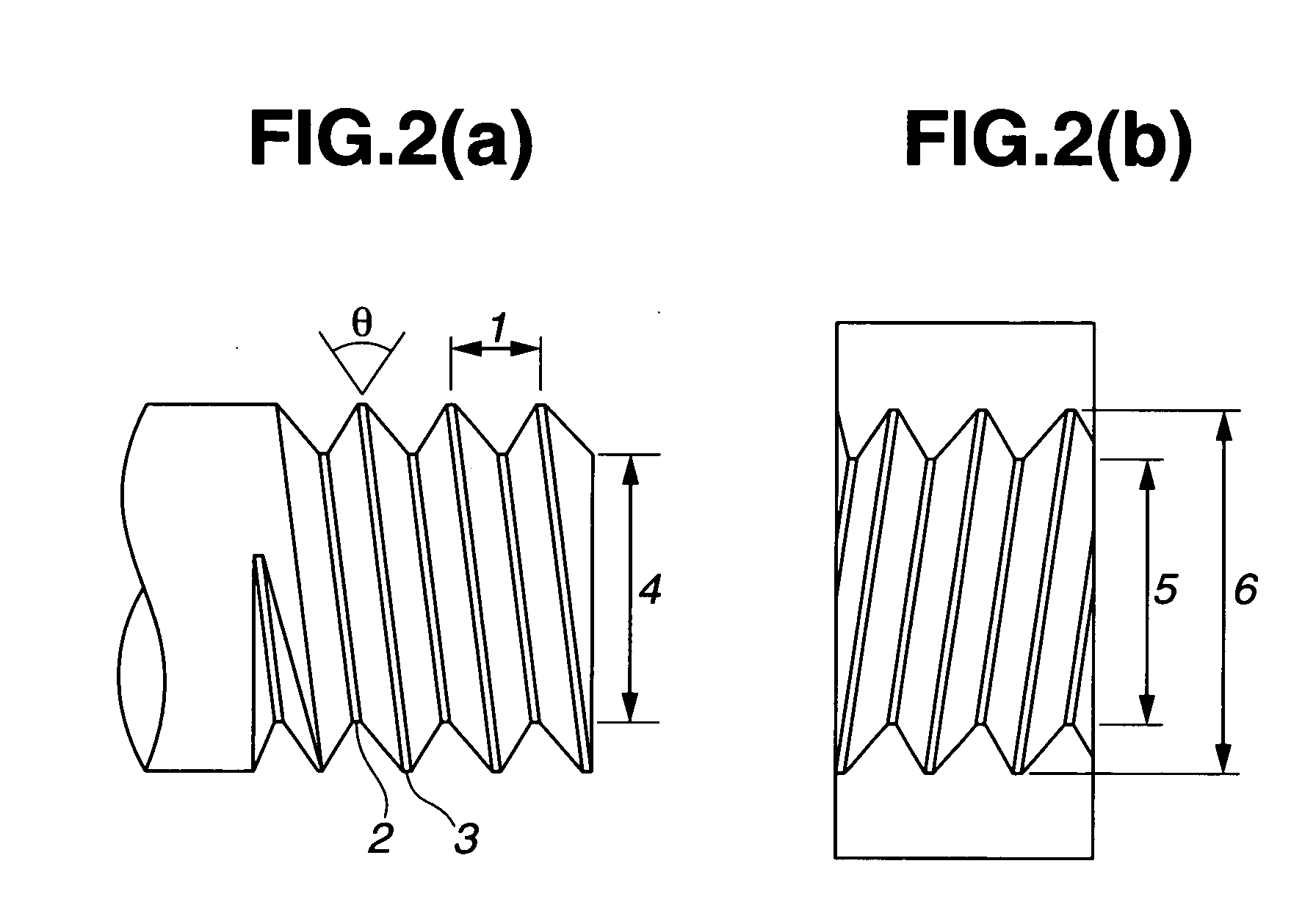Rare earth metal member and making method
a rare earth metal and metal member technology, applied in the direction of screws, washing machines, ways, etc., can solve the problems of affecting semiconductor performance and reliability, requiring increased machining costs, and affecting the performance of semiconductors, so as to achieve no drop in corrosion resistance and improve corrosion resistance or plasma resistance
- Summary
- Abstract
- Description
- Claims
- Application Information
AI Technical Summary
Benefits of technology
Problems solved by technology
Method used
Image
Examples
example 1
[0063] Metallic yttrium in particulate form containing not more than 100 ppm of each of metal elements other than rare earth, Na, K, Ca, Mg, Fe, Cr, Cu, Ni, Zn and Al, was melted by electron beam bombardment and solidified into an ingot of 50 mm×50 mm×200 mm. The ingot was analyzed for oxygen by an IR combustion method using EMGA-650 (Horiba Mfg. Co., Ltd.), detecting an oxygen content of 1.0% by weight. The ingot was sliced by wire cut EDM to form a plate of 5 mm×20 mm×20 mm or 5 mm×40 mm×100 mm. The machined surface was brass colored due to brass contamination. The plate was dipped in an aqueous solution of 0.25 mole / L citric acid for 10 minutes, while stirring. After the acid cleaning, the plate was washed with flowing deionized water, dipped in deionized water in a ultrasonic agitation tank for 5 minutes, and washed again with flowing deionized water.
[0064] The metallic yttrium plate as surface cleaned was analyzed in depth by glow discharge mass spectroscopy (glow discharge ma...
example 2
[0067] The procedure of Example 1 was repeated aside from using metallic dysprosium in particulate form containing not more than 100 ppm of each of metal elements other than rare earth, Na, K, Ca, Mg, Fe, Cr, Cu, Ni, Zn and Al. A metallic dysprosium plate was formed, surface cleaned with citric acid aqueous solution, and analyzed. The results of glow discharge mass spectroscopy are shown in Table 1. The results of plasma etching test are shown in Table 2. The grain size was 5.7 mm. The surface resistivity was 2.056×10−4 Ω / square when measured as in Example 1.
example 3
[0070] Metallic yttrium in particulate form was melted by electron beam bombardment and solidified into a rectangular ingot of 150 mm×100 mm×20 mm. The ingot was analyzed for oxygen by an IR combustion method, detecting an oxygen content of 1.1% by weight. The ingot was cut by a band saw into pieces of 150 mm×20 mm×20 mm, which were machined by a lathe / milling machine into hexagon head bolts and hexagon nuts of the ISO standard M6 size. For removing the grinding fluid, the bolts and nuts were immersed in ethanol where ultrasonic cleaning was performed. They were then dipped in an aqueous solution of 0.25 mole / L citric acid where ultrasonic cleaning was performed. They were washed with a large volume of deionized water for removing the citric acid. Bolts and nuts of yttrium were obtained in this way.
PUM
| Property | Measurement | Unit |
|---|---|---|
| Grain size | aaaaa | aaaaa |
| Fraction | aaaaa | aaaaa |
| Depth | aaaaa | aaaaa |
Abstract
Description
Claims
Application Information
 Login to View More
Login to View More - R&D
- Intellectual Property
- Life Sciences
- Materials
- Tech Scout
- Unparalleled Data Quality
- Higher Quality Content
- 60% Fewer Hallucinations
Browse by: Latest US Patents, China's latest patents, Technical Efficacy Thesaurus, Application Domain, Technology Topic, Popular Technical Reports.
© 2025 PatSnap. All rights reserved.Legal|Privacy policy|Modern Slavery Act Transparency Statement|Sitemap|About US| Contact US: help@patsnap.com



